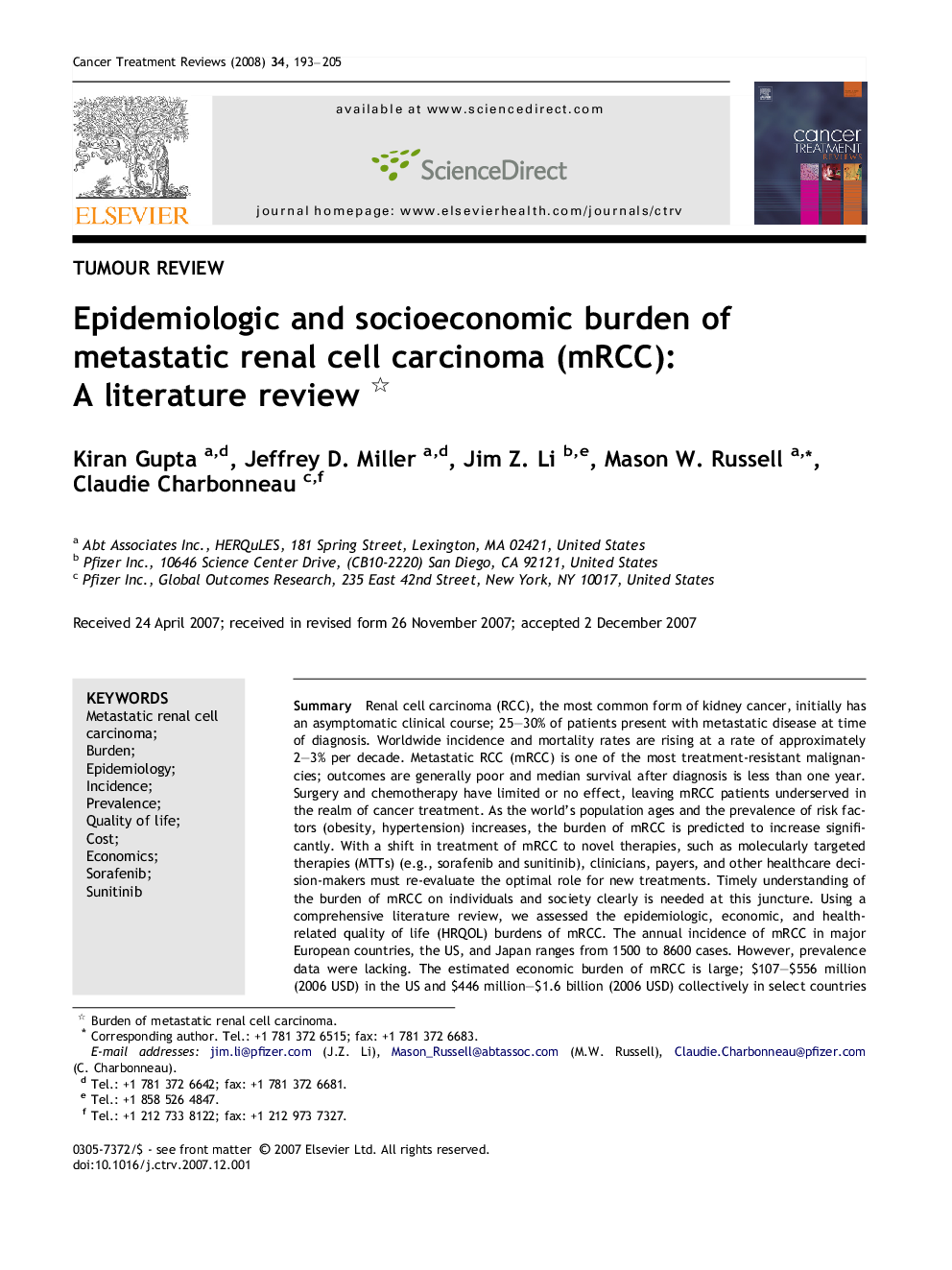| Article ID | Journal | Published Year | Pages | File Type |
|---|---|---|---|---|
| 3980647 | Cancer Treatment Reviews | 2008 | 13 Pages |
SummaryRenal cell carcinoma (RCC), the most common form of kidney cancer, initially has an asymptomatic clinical course; 25–30% of patients present with metastatic disease at time of diagnosis. Worldwide incidence and mortality rates are rising at a rate of approximately 2–3% per decade. Metastatic RCC (mRCC) is one of the most treatment-resistant malignancies; outcomes are generally poor and median survival after diagnosis is less than one year. Surgery and chemotherapy have limited or no effect, leaving mRCC patients underserved in the realm of cancer treatment. As the world’s population ages and the prevalence of risk factors (obesity, hypertension) increases, the burden of mRCC is predicted to increase significantly. With a shift in treatment of mRCC to novel therapies, such as molecularly targeted therapies (MTTs) (e.g., sorafenib and sunitinib), clinicians, payers, and other healthcare decision-makers must re-evaluate the optimal role for new treatments. Timely understanding of the burden of mRCC on individuals and society clearly is needed at this juncture. Using a comprehensive literature review, we assessed the epidemiologic, economic, and health-related quality of life (HRQOL) burdens of mRCC. The annual incidence of mRCC in major European countries, the US, and Japan ranges from 1500 to 8600 cases. However, prevalence data were lacking. The estimated economic burden of mRCC is large; $107–$556 million (2006 USD) in the US and $446 million–$1.6 billion (2006 USD) collectively in select countries worldwide. MTTs have potential to reduce the burden of mRCC and provide substantial value beyond their clinical effectiveness.
